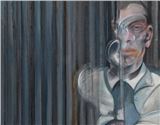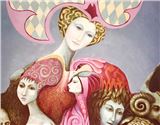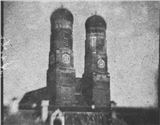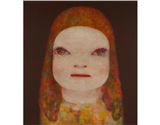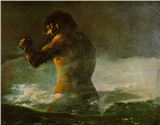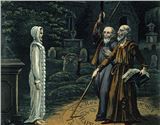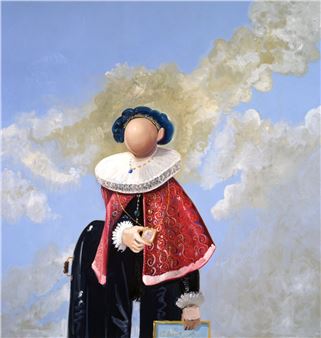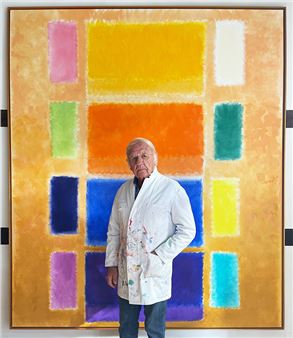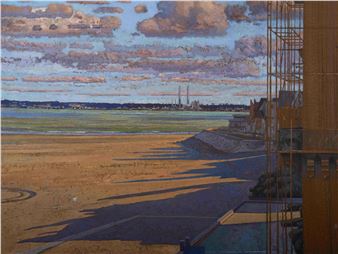Engraving The Light: The engraving in one hundred masterpieces from Dürer to Picasso
By hosting this exhibition devoted to the history of engraving and its various techniques, the Musée Marmottan opens its doors to one of the most popular means of communication from the 15th century onwards, until it was replaced by the newspaper industry and photography. Nevertheless, the art of the engraving remains one of the arts that is richest in subtle inventions and surprises. Engravers went to great lengths to convey the nuances of light and to express its secrets, using black and white alone. At the end of the 19th century, their reflections on the rendering of the light echoed the approaches of certain Impressionist painters to capture its rapid and vibrant passage in their painting. Indeed, artists like Redon, Degas, and Monet were not insensitive to the new processes of creating luminous effects by means of copper or stone. A special section of the exhibition is dedicated to dust grain photogravure, a printing process that offered late-19th-century photographers the possibility of engraving light, at the same time as Impressionism attempted to depict it in painting. This section closes the exhibition.
One of the aims of the exhibition is to reflect not only the diversity that makes up the collection of the Fondation William Cuendet & Atelier de Saint-Prex (on long-term loan at the Musée Jenisch Vevey in Switzerland) but the spirit of curiosity that characterizes its members. Resulting from the patience of a few private collectors who managed to amass the big names of printmaking and the passion of the contemporary creators associated with the Atelier de Saint-Prex, this ensemble of plates reflects the history of engraving from the first woodblock prints of the 15th century to the inventions of the 19th and 20th centuries. In addition to the masterpieces on display, the present choice highlights certain emblematic images because of their content or technique, thereby representing the wealth of this collection, appreciated by collectors and artists alike. The exhibition is not a chronological display but rather a free and sensitive approach that shines a light on the affinities between old masters and contemporary creators. Therefore, the works of Dürer, Rembrandt, Canaletto, Piranesi, Goya, Lorrain, Nanteuil, Daumier, Degas, Bresdin, Redon, Bonnard, and Picasso rub shoulders with the creations of artists working at the Atelier de Saint-Prex, in Switzerland. Furthermore, this is one of the aims of the Fondation which does not seek to establish comparisons or hierarchies but to illustrate the fact that formal questions and technical ambitions resonate with each other from work to work and transcend time.
The exhibition is organized into seven sections exploring the different themes, functions, and processes of engraving. Visitors can discover works in the service of books with illustrations by Dürer and Rembrandt; etching in the service of tourism with vedute by Canaletto and Piranesi; the burin in the service of power, with portraits by Nanteuil and Mellan allowing the image of the king and the great figures of the court to be disseminated. The passion for landscape is evoked through plates by Claude Lorrain, Rodolphe Bresdin, and Giorgio Morandi. Next, a large section is dedicated to the Intimités favoured by 19th-century artists, from Redon to Bonnard, as well as Manet, Degas, Toulouse-Lautrec, and Fantin-Latour. The technical prowess that has always fascinated engravers and given rise to lively discussions in the studio is evoked in the last sections. The final space focuses on the invention of dust grain photogravure, a technique favoured by photographers from the mid-19th century onwards, in an effort to confer a tactile and lively rendering to their prints obtained by inking the copper plate.

Recommended for you
By hosting this exhibition devoted to the history of engraving and its various techniques, the Musée Marmottan opens its doors to one of the most popular means of communication from the 15th century onwards, until it was replaced by the newspaper industry and photography. Nevertheless, the art of the engraving remains one of the arts that is richest in subtle inventions and surprises. Engravers went to great lengths to convey the nuances of light and to express its secrets, using black and white alone. At the end of the 19th century, their reflections on the rendering of the light echoed the approaches of certain Impressionist painters to capture its rapid and vibrant passage in their painting. Indeed, artists like Redon, Degas, and Monet were not insensitive to the new processes of creating luminous effects by means of copper or stone. A special section of the exhibition is dedicated to dust grain photogravure, a printing process that offered late-19th-century photographers the possibility of engraving light, at the same time as Impressionism attempted to depict it in painting. This section closes the exhibition.
One of the aims of the exhibition is to reflect not only the diversity that makes up the collection of the Fondation William Cuendet & Atelier de Saint-Prex (on long-term loan at the Musée Jenisch Vevey in Switzerland) but the spirit of curiosity that characterizes its members. Resulting from the patience of a few private collectors who managed to amass the big names of printmaking and the passion of the contemporary creators associated with the Atelier de Saint-Prex, this ensemble of plates reflects the history of engraving from the first woodblock prints of the 15th century to the inventions of the 19th and 20th centuries. In addition to the masterpieces on display, the present choice highlights certain emblematic images because of their content or technique, thereby representing the wealth of this collection, appreciated by collectors and artists alike. The exhibition is not a chronological display but rather a free and sensitive approach that shines a light on the affinities between old masters and contemporary creators. Therefore, the works of Dürer, Rembrandt, Canaletto, Piranesi, Goya, Lorrain, Nanteuil, Daumier, Degas, Bresdin, Redon, Bonnard, and Picasso rub shoulders with the creations of artists working at the Atelier de Saint-Prex, in Switzerland. Furthermore, this is one of the aims of the Fondation which does not seek to establish comparisons or hierarchies but to illustrate the fact that formal questions and technical ambitions resonate with each other from work to work and transcend time.
The exhibition is organized into seven sections exploring the different themes, functions, and processes of engraving. Visitors can discover works in the service of books with illustrations by Dürer and Rembrandt; etching in the service of tourism with vedute by Canaletto and Piranesi; the burin in the service of power, with portraits by Nanteuil and Mellan allowing the image of the king and the great figures of the court to be disseminated. The passion for landscape is evoked through plates by Claude Lorrain, Rodolphe Bresdin, and Giorgio Morandi. Next, a large section is dedicated to the Intimités favoured by 19th-century artists, from Redon to Bonnard, as well as Manet, Degas, Toulouse-Lautrec, and Fantin-Latour. The technical prowess that has always fascinated engravers and given rise to lively discussions in the studio is evoked in the last sections. The final space focuses on the invention of dust grain photogravure, a technique favoured by photographers from the mid-19th century onwards, in an effort to confer a tactile and lively rendering to their prints obtained by inking the copper plate.
Artists on show
- Albrecht Dürer
- Camille Pissarro
- Canaletto
- Claude Lorrain
- Claude Monet
- Edgar Degas
- Édouard Manet
- Édouard Vuillard
- Félix Vallotton
- Francisco José de Goya y Lucientes
- Giorgio Morandi
- Giovanni Battista Piranesi
- Henri de Toulouse-Lautrec
- Henri Fantin-Latour
- Honoré Daumier
- Jacques-Fabien Gautier d'Agoty
- Jean Morin
- Odilon Redon
- Pablo Picasso
- Philippe de Champaigne
- Pierre Bonnard
- Pietro Sarto
- Rembrandt van Rijn
- Robert Nanteuil
- Rodolphe Bresdin
Contact details

Related articles
With over one hundred masterpieces on display, the exhibition showcases an ensemble of works ranging from the 15th to the 21st century. The works of the great masters will be displayed in a dialogue with creations by contemporary artists.
From 5 July to 17 September 2023, the Musée Marmottan Monet will host a remarkable collection of engravings belonging to the Swiss Fondation William Cuendet & Atelier de Saint-Prex.

 ARTISTS
ARTISTS
